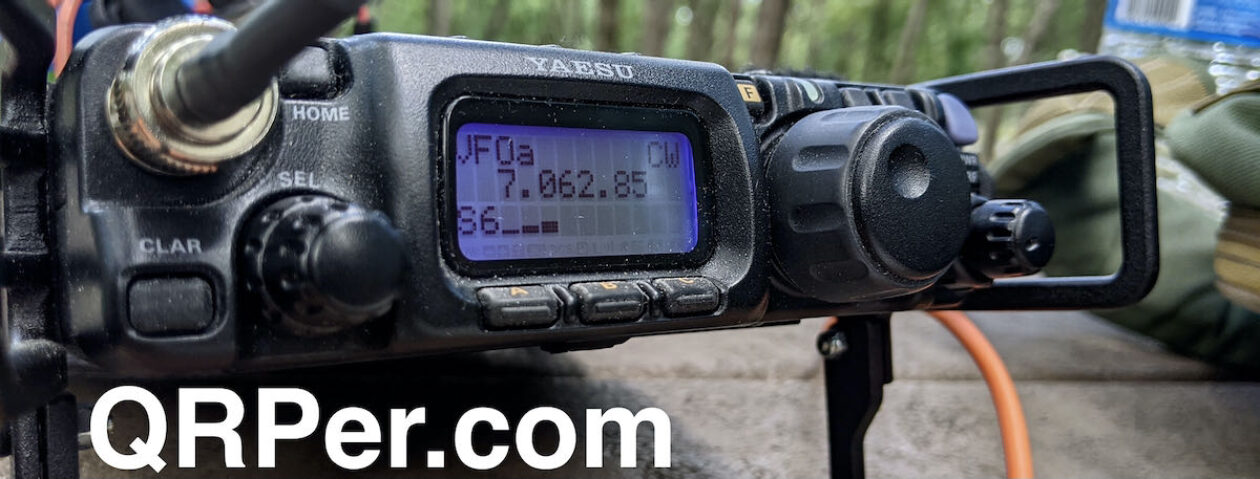 I’m very fortunate in that in the past few years I’ve accumulated a number of QRP radios that I use in rotation when I do park and summit activations.
I’m very fortunate in that in the past few years I’ve accumulated a number of QRP radios that I use in rotation when I do park and summit activations.
I’m often asked for advice on choosing radios, and as I’ve mentioned in the past, I feel like the decision is a very personal one–everything is based on an operator’s own particular preferences.
Over the years, I’ve written formal reviews about most of the field radios in my collection. In those reviews, I try to take a wide angle view of a radio–to see how it might appeal to a number of types of operators. I highlight the pros and cons, but I don’t focus on my own particular take because, again, my style of operating might not match that of readers. I try to present the full picture as clearly as I can and let the reader decide.
The Getting To Know You series gives me an opportunity to highlight one radio at a time and showcase what I love about it and why it’s a part of my permanent radio collection. After we spend a bit of time talking about the radio, we’ll do a park or summit activation with it!
The Elecraft KX3
I was originally introduced to the Elecraft KX3 at the 2011 Dayton Hamvention–over a decade ago at time of posting!
I was commissioned to write a review of the KX3 for the Monitoring Times Magazine and Elecraft was kind enough to lend me a brand new KX3.
At the time, there was nothing like the KX3 on the market and I felt like I’d just received a radio from the future.
The KX3 offered 160-6 meter general coverage with an optional 2 meter module, ATU, internal AA battery compartment, and roofing filters. The controls were top mounted and current draw in receive was as little as 150 mA. At the time, there was no other radio on the market that could compare with the KX3’s field prowess.
But it wasn’t just its field design that was impressive.
In fact, when Rob Sherwood tested the KX3, it placed at the top of his list which is sorted by Third-Order Dynamic Range Narrow Spaced.
This field radio sported a bullet-proof front end and true contest chops, displacing $10,000+ high-end rigs.
Today, the KX3 (at time of posting) is still number 12 on Rob’s list. An impressive feat!
Herein lies the danger of doing reviews…
 I didn’t have the KX3 in my grubby little hands for more than a few hours when I decided I had to buy one. I sold some gear to free up money and I bought the KX3 Elecraft sent me on loan for the full price.
I didn’t have the KX3 in my grubby little hands for more than a few hours when I decided I had to buy one. I sold some gear to free up money and I bought the KX3 Elecraft sent me on loan for the full price.
I’ve taken this KX3 on numerous activations and on international travels. It’s a brilliant QRP companion.
These days, it’s in the shack more than in the field because I keep it hooked up to my KXPA100 amplifier. I feel like the KX3/KXPA100 combo is like having a poor man’s K3. As a huge bonus, the KX3 takes up little space on my table and the KXPA100 sits on a shelf–the overall footprint is much smaller than a K3 or K3s. It’s like having a remote head on my desk and works perfectly for my limited space shack.
The KX3 is a stellar, benchmark field radio, so it was great fun to feature it in this video.
Zebulon B. Vance Birthplace (K-6856)
For this Getting To Know You report and video, I decided to activate one of my favorite local parks on September 12, 2023: the Vance Birthplace. Continue reading Getting To Know You Series: The Elecraft KX3–My thoughts, notes, and one extreme QRPp contact!
















































